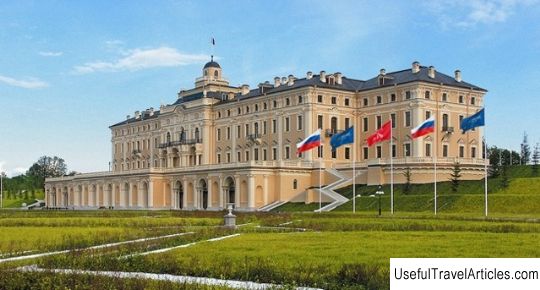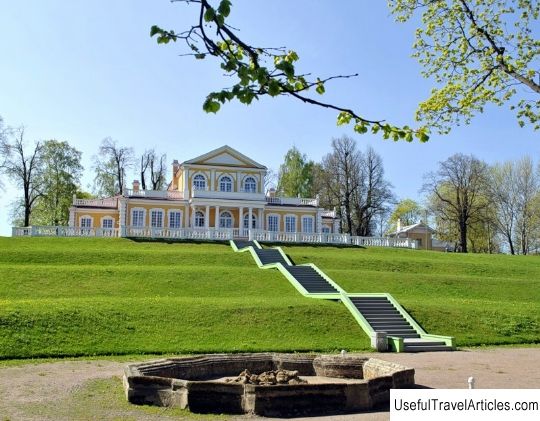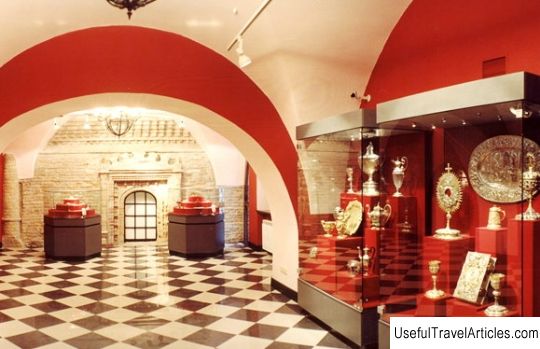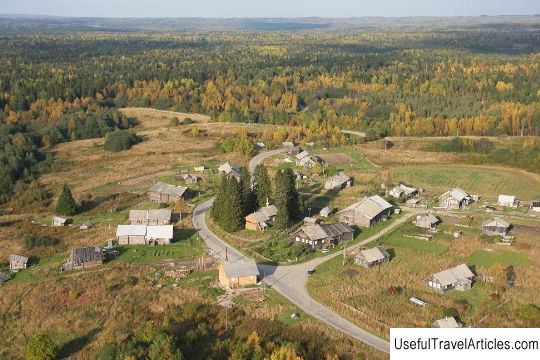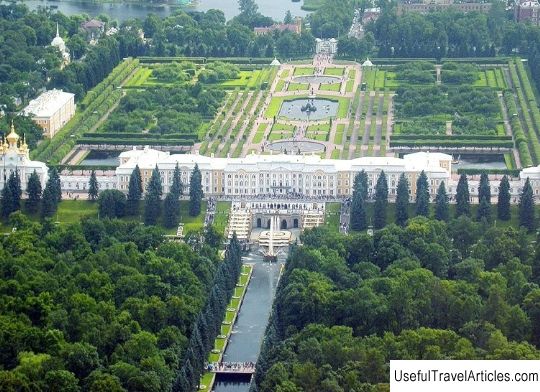Konstantinovsky Park description and photos - Russia - St. Petersburg: Strelna
Rating: 8,3/10 (689 votes) 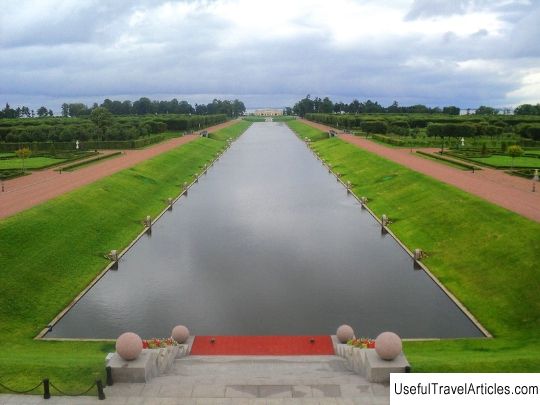
Konstantinovsky Park description and photos - Russia - St. Petersburg: Strelna. Detailed information about the attraction. Description, photos and a map showing the nearest significant objects. Photo and descriptionKonstantinovsky (Strelninsky) park is an original solution to the theme of a regular seaside park. It owes its appearance to Peter I, and its creation dates back to the early 18th century. For some time, the Strelna residence competed with Peterhof, since the palace in Strelna was made on a larger scale than even the Upper Chambers of Peterhof. Developing the thought of Peter the Great, on whose orders the first wooden palace was built, a palace and a garden were created in front of him, named Strelninsky, and renamed in the 19th century after its new owner, Grand Duke Konstantin Nikolaevich in Konstantinovsky. If we consider the palace of Peter I a small architectural sign, then the Constantine Palace looks like a monumental symbol in the panorama of the southern coast of the Gulf of Finland. The architectonics of the palace and the surrounding landscape are inseparable, thanks to the belvedere, which crowns the building, cut through by arched openings, a triple arcade in the middle volume of the palace, mezzanine windows, from which a beautiful panorama of the park continued by the sea is visible. Strelninsky Park covers an area of 132 hectares and consists of the middle part of the park, or the central region, and lateral, eastern and western regions. Its borders are: the Gulf of Finland - in the north, the Petrovsky Canal - in the west, the Zhukovka river - in the east, the Upper Garden - in the south. The central region, covering an area of 45 hectares, is a park of the first quarter of the 18th century. Its distinctive feature is the presence of channels. The Middle Channel is located along the axis of the palace. He directs the perspective, which begins with the triple arcade of the palace, towards the sea. Two channels parallel to it, called the East and West, clearly define the boundaries of the rectangular territory. Two transverse channels connect the longitudinal channels to each other. The first transverse channel located next to the coastal strip, intersecting with the central channel, turns into the Ring channel. Like a frame, it frames the round Petrovsky Island. The second transverse channel connects the three longitudinal channels and is at the same time the border that divides the park into four parts. Four bosquettes fit into this water frame. Their planning is based on the intersections of radial and radial alleys, with the organization of sites of different shapes and sizes at the intersections. Bosquets, adjacent to Petrovsky Island, canals turn into islands. This combination of three geometrically regular islands is the most original motif of the seaside regular gardens. It is interesting that the interpretation of the garden as an island, some kind of earthly paradise, which is separated from the rest of the world, was used for the first time in the compositional solution of the Summer Garden. The canals are crossed by bridges connected by a system of perimeter alleys. Triangles, stars and other geometrical figures, clearly visible in the garden plan, testify to the regular nature of the park's layout. The canals of the Konstantinovsky Park are flowing, they connect to reservoirs that were built in the time of Peter, and go out into the bay through the Western Canal. Park canals are at the same time water alleys, which were intended for walks on small boats. Even a project was developed to connect the Strelna and Peterhof canals. As a defining element of the park's layout, the canals have a significant decorative effect: their clearly organized, directional perspectives, which extend into the bay, optically connect the park and the sea. For Strelna, Peter, unlike Peterhof, conceived a whole system of canals. Peter I presented his idea to B.-K. Rastrelli, and he, having arrived in St. Petersburg in 1716, immediately set about creating a model of the Strelna ensemble. The implementation of the scale model went along with the construction of three canals running from the palace to the sea. In September 1716 Rastrelli was replaced by J.-B. Leblon. According to the project of Rastrelli, the Eastern and Central canals were dug, and the West began. Leblond, despite the fact that he criticized Rastrelli's project, did not abolish the canal system, but made it the basis of the park's composition. Simultaneously with the work of J.-B. Leblon over the details of the project and the embodiment of his idea, in 1718 the Italian architect S. Cipriani was ordered to another project of the palace and garden. Cipriani used the drawings that were sent to him from Russia. But Peter I did not approve the project of S. Cipriani. The final stage in the formation of Strelninsky Park is associated with the work of N. Michetti - he was the author of the palace project and the solution of the garden layout, where he made the second transverse canal. Strelninsky Park is the lower one. A natural slope rises above the park, which crowns the palace. The eastern and western terraces are divided into two parts by a descent. Pools of irregular shape are located on the axis of the slopes. The composition of the vast landscape parts combines two types of alleys: curvilinear and straight. The western region includes a large Trekov meadow, on the southern edge of which there are ponds: Melnichy, Foreliev, Karpiev. The park in Strelna impresses with its unusual design, which has no analogues in European park construction in the first half of the 18th century. Today, the Konstantinovsky Palace and park have been restored and are the residence of the President.        We also recommend reading Chateau de Gien description and photos - France: Loire Valley Topic: Konstantinovsky Park description and photos - Russia - St. Petersburg: Strelna. |
